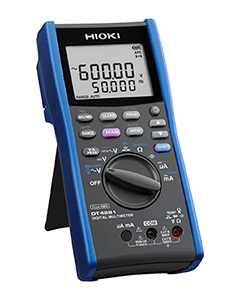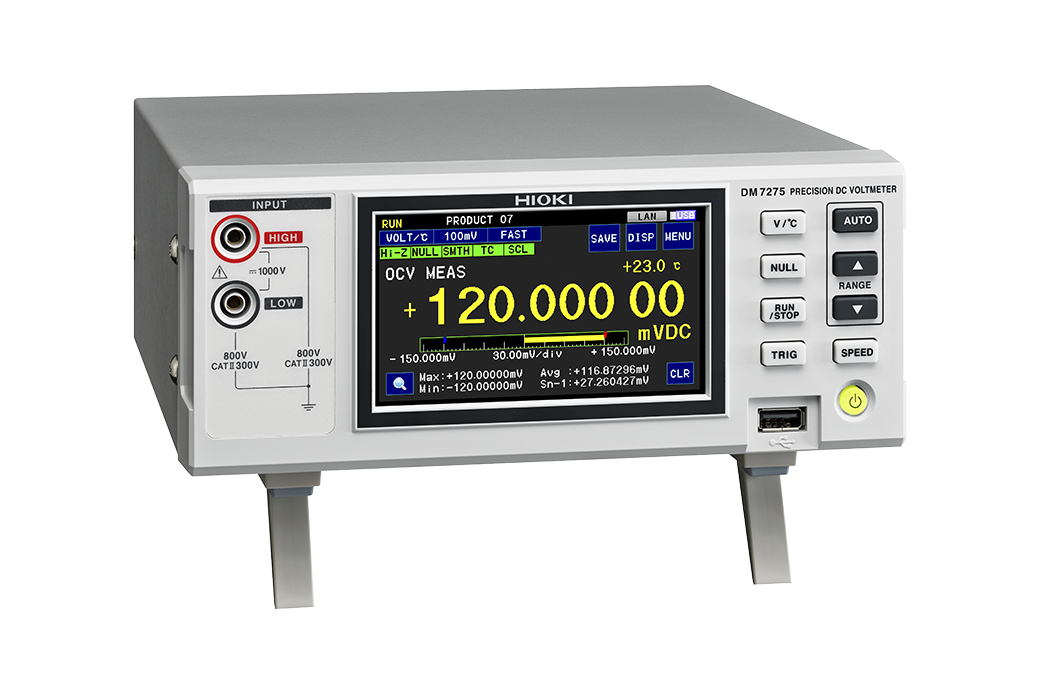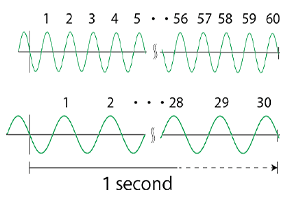What is a Digital Multimeter?
What is a Digital Multimeter? Basic information and explanation of how digital multimeters differ from analog testers
Overview
Measuring instruments are necessary in order to check the status of electronic devices. Digital multimeters are recommended when you need to check the status of an electronic device because such information is not visible. This page answers questions about digital multimeters that you might be embarrassed to ask (for example, what digital multimeters are and how they differ from analog testers), offers an introduction to the types that are available, and explains how to choose the model that’s right for you.
Digital multimeter that’s easy to use, even for beginners
Digital multimeters are measuring instruments that can measure quantities such as voltage, current, and resistance. Measured values are shown on a digital display, allowing them to be read easily and directly, even by first-time users.
Some digital multimeters select the measurement range automatically, eliminating the need to choose it manually. Consequently, these instruments are comparatively easy to use, even for beginners. Naturally, analog testers also offer advantages, for example in terms of the ease with which changes in the measured value during measurement can be read and the intuitive ease with which a needle can be viewed in locations where a digital reading might be difficult to see.
Since both digital multimeters and analog testers have advantages, you can choose the instrument that’s best for your application by clarifying what you wish to measure.
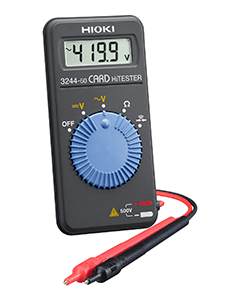 Easy for beginners
Easy for beginners
Digital multimeters Needle indicates changes in values
Needle indicates changes in values
Analog testers
High-precision digital multimeters
Digital multimeters are often described as having high precision, but the precision of measurement results themselves does not differ significantly from analog testers. However, in this context, “high precision” refers to the instruments’ ability to accommodate higher resolutions because their digital displays can display more digits. Since analog testers indicate values with a needle, the possibility exists that the person using the instrument will make a mistake when reading the value. Such mistakes are known as reading errors.
Digital multimeters have the advantage of being less susceptible to reading errors since they use a digital display. Many users feel that the easy-to-read digital display is preferable since human error can occur no matter how much care is taken.
Unlike analog testers, measured values from digital multimeters can be read directly, without the need to interpret fine-grained graduations, and the instruments are easy to read in dark locations. In this way, digital multimeters excel in the ease with which their values can be read*. Some digital multimeters can send data to a computer, further reducing the likelihood of error.

- *When measuring a phenomenon that’s characterized by a high level of variability, the value of the minimum digit on digital instruments can change quickly, making the result difficult to read. In such situations, it may be easier to read the result as an average value on an analog tester since the needle is incapable of mechanically tracking the fluctuations.
Types of digital multimeters
Digital multimeters can be broadly classified as either of two types.
Handheld type
Benchtop type
 5-1/2-digit digital multimeter
5-1/2-digit digital multimeter 7-1/2-digit high-precision model specifically designed to measure DC voltage
7-1/2-digit high-precision model specifically designed to measure DC voltage
Handheld models feature a compact design so that they can be held during use. Since they are easy to carry, they can be used in a variety of applications, from laboratories to on-site work. Just because they're compact doesn’t mean they lack for functionality. High-end models are available, so you can choose the instrument that’s right for your application. Handheld models are available in a variety of form factors, including compact, card-shaped, and pen-shaped varieties.
By contrast, benchtop models are designed to be placed on a horizontal surface during use. They are often embedded in workbenches, systems, and production lines, and many have a large number of display digits. There’s a trend toward high added value in the form of capabilities that are provided by the instrument alone or in conjunction with a computer, including data transfer, averaging, and advanced calculations.
When selecting a digital multimeter, it’s useful to ask whether the model you choose needs to be portable, or whether the capabilities you require are only available in benchtop models.
How to choose a digital multimeter
Many first-time purchasers may feel intimidated by the broad range of functionality offered by digital multimeters. How can one choose the best instrument for a given application? The first step is to determine whether a candidate model has the necessary functionality and to check specifications like its range and resolution. If you plan to use the instrument outdoors, for example at a worksite, it's a good idea to choose a model that’s designed to withstand such use.
If you’ll need to take the instrument with you frequently, a large model would presumably be difficult to use. Compact products encompass a broad range of variants, from simple, card-shaped models to functional handheld designs, so carefully considering the environment in which you’ll use the instrument is a good way to gain peace of mind. It’s also important to choose a digital multimeter with the right level of precision for the application.
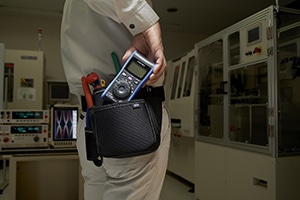
Multifunctional digital multimeters have the advantage of being usable in an array of situations. Of course, if you’ll mostly be using the instrument in circumstances that don’t require much precision, there’s no need to choose an expensive model. Try to choose a model with the precision and functionality that you need.
Finally, it’s also important to choose a digital multimeter that will ensure safety at the worksite.
Choosing the digital multimeter that’s right for you
Digital multimeters display values in an easily readable format, and there’s a trend toward multifunctional models with high precision and resolution. Since there are so many types available, it's not unusual for purchasers to become confused about which model best suits their needs. When choosing a digital multimeter, the first step is to ask what functions you wish to use.
Then consider factors such as safety and the operating environment and you’ll be able to choose the digital multimeter that best meets your needs.
How to Use
- How to use digital multimeters (DMMs) properly and how to choose a safe multimeter
- Using and function of digital multimeters

